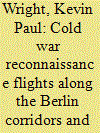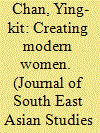| Srl | Item |
| 1 |
ID:
140491


|
|
|
|
|
| Summary/Abstract |
During the Cold War, Soviet and East German military units, equipment and activities around Berlin were high priority targets for Western military intelligence agencies. This article examines the imagery gathering undertaken by British, French and US reconnaissance flights along the Berlin Air Corridors and inside the Berlin Control Zone. The quantity of information was effectively multiplied because of the close cooperation between the Western allies and coordination with Allied Military Liaison Mission ‘ground tours’. This cooperation generally went further than has been publicly acknowledged by individual governments. This paper contends that the collaboration provided the most comprehensive and regular collection of imagery on Soviet and East German military units for the duration of the Cold War. It contributed to a multi-dimensional picture of Soviet and German Democratic Republic capabilities and intentions. Soviet motives for generally not interfering with those missions on a regular basis are considered.
|
|
|
|
|
|
|
|
|
|
|
|
|
|
|
|
| 2 |
ID:
179128


|
|
|
|
|
| Summary/Abstract |
This article examines the modern kitchen as a technological artefact and a mechanism through which the postcolonial Singaporean state and agents of household consumerism such as advertisers, retailers, home economists, and social scientists constructed the image of a modern Singaporean woman. By revealing how the female consumer-cum-homemaker became a symbol of material success and middle-class status in Fordist Singapore, the article highlights two types of domestication: the subordination of women to the patriarchal imperatives of family and nation, and the transformation of hard successes in the economy into soft comforts in the kitchen. This article suggests that although the state had narrowed the gap between popular expectations for improved living standards and its ability to fulfil them, it also unwittingly enmeshed definitions of femininity, womanhood, and female citizenship in a series of contradictions and tensions that had implications for contemporary Singaporean society.
|
|
|
|
|
|
|
|
|
|
|
|
|
|
|
|